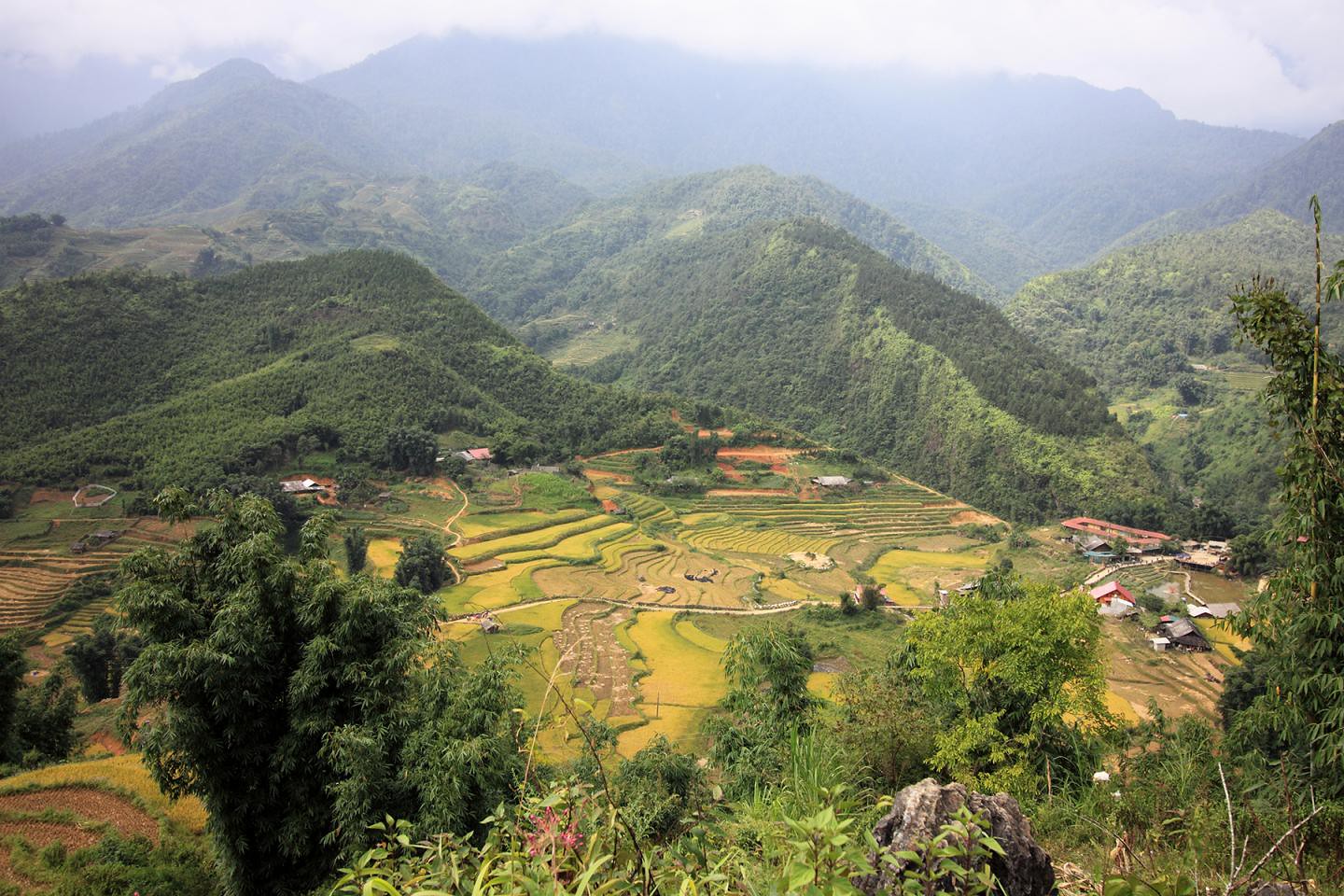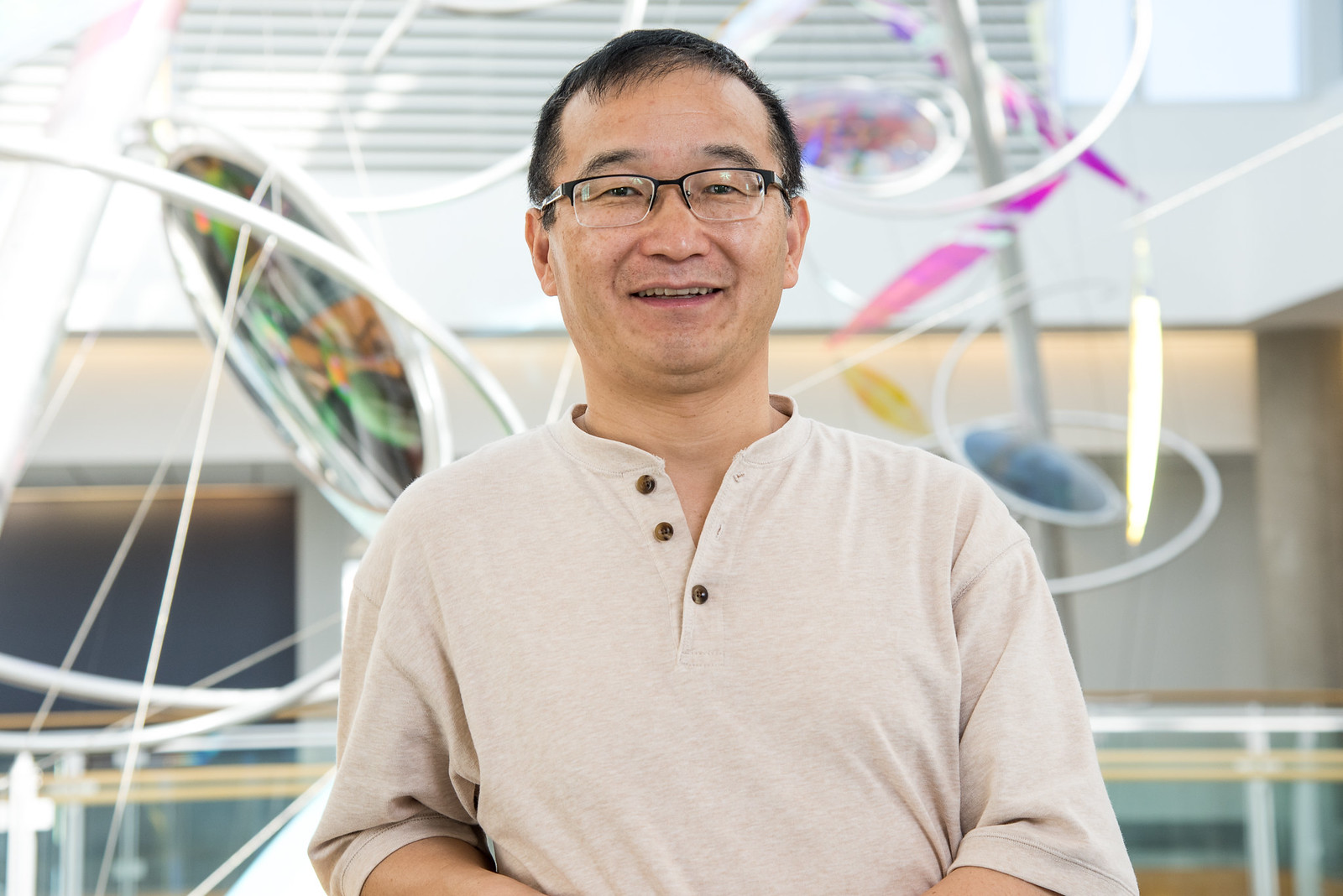Bond LSC scientist works with global consortium to eliminate costly rice disease

By Mariah Cox | Bond LSC
COLUMBIA, Mo. – Deep in the basement of the Bond Life Sciences Center is a small room emanating neon purple light. The room houses rice plants that have helped researchers develop a tool to identify different variations of rice disease and engineer disease-resistant crops.
The “Healthy Crops” research consortium, led by Heinrich Heine University in Düsseldorf, Germany, published two studies recently in Nature Biotechnology that introduced new genetic rice variants for broad-spectrum resistance to bacterial blight of rice and a diagnostic kit to track down different types of bacteria and rightly plant blight-resistant variety. Rice blight is a bacterial crop disease that causes plant death and significantly reduces rice yields in South Asia and Africa.
Bing Yang, a joint faculty member at the University of Missouri Bond Life Sciences Center and the Donald Danforth Plant Science Center, studies that room full of plants in Bond LSC as it operates on a 12-hour night and day schedule using lightbulbs that are energy efficient and don’t give off a lot of heat, thus producing the neon glow. Scientists from his group were key collaborators on the project. The researchers specifically want to distribute their blight-resistant rice varieties and diagnostic tool to small farmers in the developing world.

“Bacteria happen in the field naturally and they keep infecting new plant leaves. The bacteria kill the plant and once the plant dies, there is little to no yield from it,” said Yang. “Resistance gene is the only effective way to control the disease, and antibiotics are pretty expensive and ineffective to use to kill the bacteria in the field.”
Globally, rice is the most important food crop that feeds 56% of the world’s population. Rice blight is a threat to crop production and the livelihoods of small farmers with little acreage in developing countries. For example, on average, $3.6 billion is lost annually in India due to bacterial blight. Heavy rain and monsoon seasons often accelerate problems with blight as it can spread via flood water.
The five-year collaboration includes researchers from across the globe at the University of Missouri, University of Florida, Heinrich Heine University in Düsseldorf, Germany, the Institut de Recherche pour le Développement in France, and the International Rice Research Institute in the Philippines.
Because of rice’s importance as a global food staple, the Healthy Crops consortium scientists sought to find a way to help farmers avoid planting crops that are susceptible to the disease. To do this, they came up with the idea of using chemicals as a dye agent that, when applied to the plant, can tell the farmer what specific form of the bacteria is in their field. From this information, the farmers can then plant a crop that is resistant to that specific strain of bacteria.
The implications for this technology mean cheaper methods of combating the effects of rice blight and allowing farmers to yield more rice annually, thus supporting their livelihoods and feeding those in developing countries.
“Bacteria blight of rice is a big challenge, but we naturally work well together and by combining multiple expertise we have been able to tackle the problem,” Yang said.
Moving forward, the researchers are working to further develop the tool and disease-resistant seeds to get them into the hands of small farmers.
Ultimately, the research has also allowed them to understand a way to block the acquisition of a nutrient by the bacteria from the host. Once the bacteria infect the rice plant, they secrete proteins into the rice cells turning on the plants’ SWEET genes. SWEETs export sugar from the rice cells and make it available to the bacteria which feed on it in the cell wall space. From there, the bacteria have enough resources to multiply and cause the plant to die.
Some rice varieties are resistant against rice blight bacteria because they contain different variants of the SWEET promoters which do not allow the bacteria’s proteins to turn on the genes. However, the bacteria can adapt and attack rice plants with different variations. In the second paper published by the consortium, the researchers developed a series of variants from two popular rice varieties that are resistant to a large number of bacterial strains.
By understanding the disease biology to develop disease-resistant plants, the researchers can help reduce the yield loss, increase the productivity of rice plants and benefit farmers.
Bing Yang is a joint faculty member of the MU Bond Life Sciences Center and the Donald Danforth Plant Science Center in St. Louis.
Learn more about this discovery in a release from the Heinrich Heine University Düsseldorf. Yang was a co-author of two publications published by Nature Biotechnology in October 2019 titled “Diagnostic kit for rice blight resistance” and “Broad-spectrum resistance to bacterial blight in rice using genome editing.”

